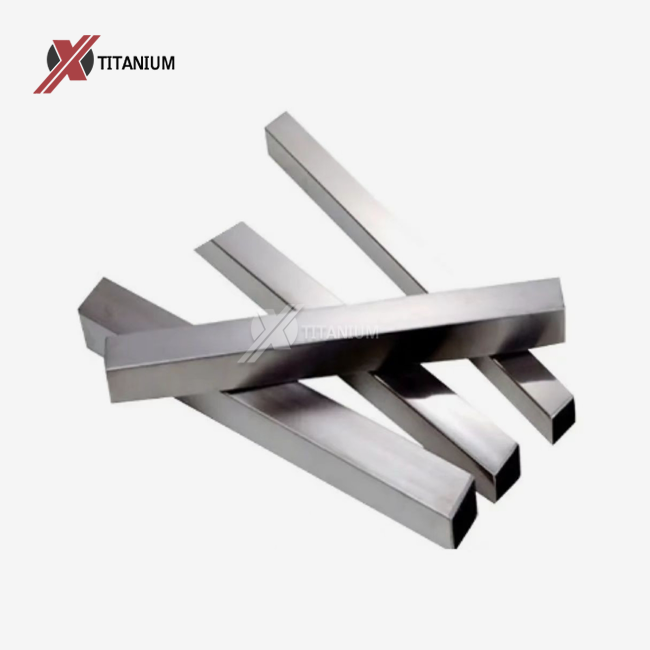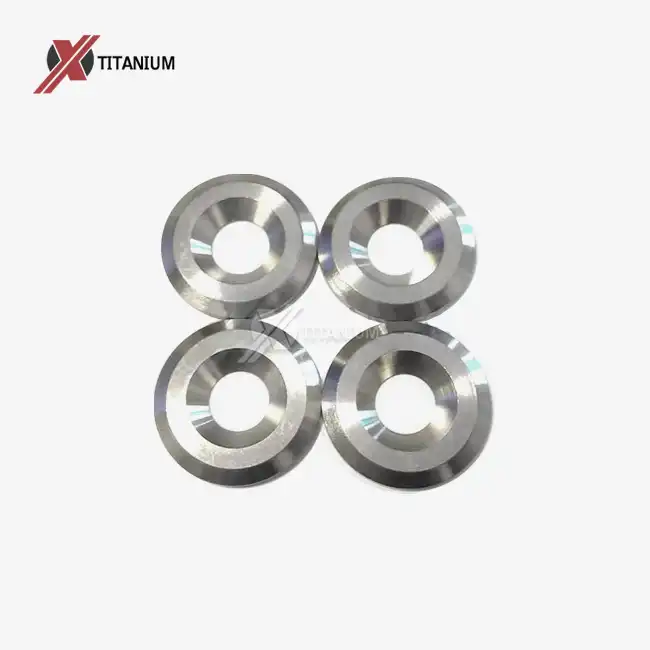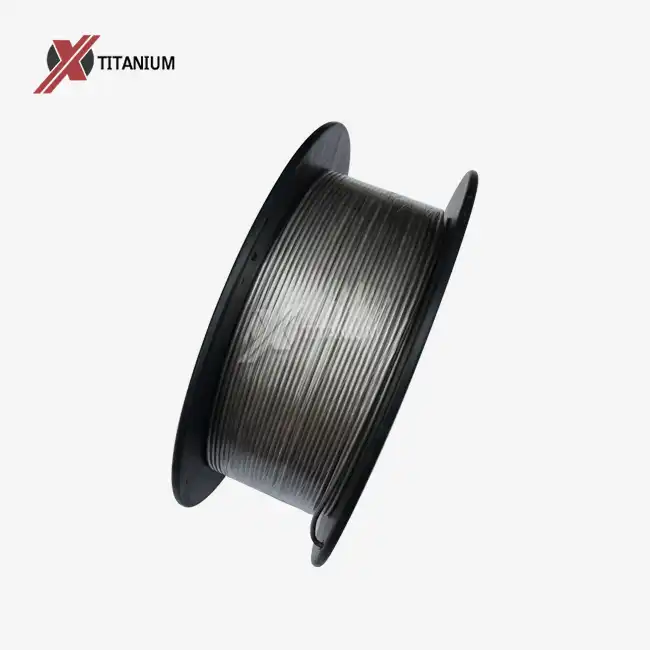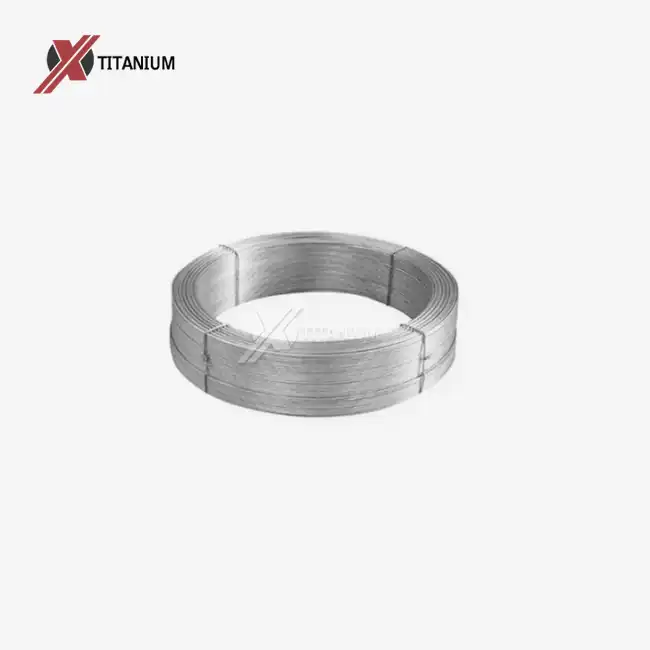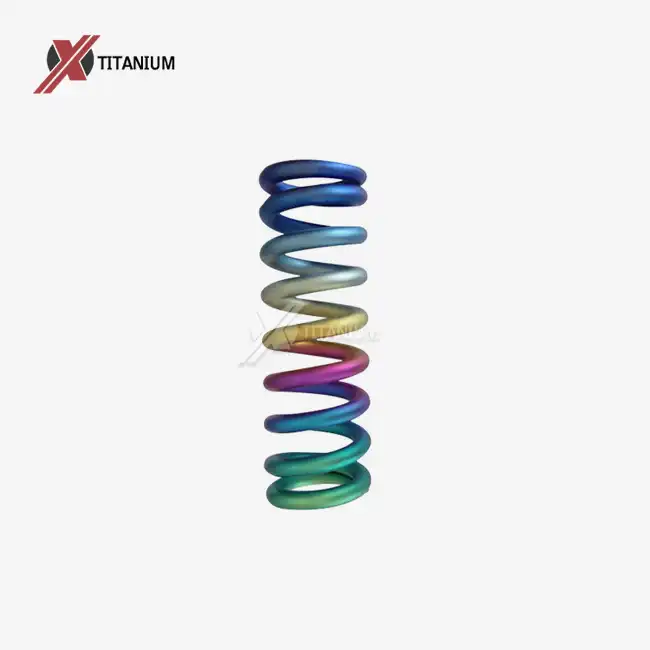Grasping Titanium Square Rod Properties
Mechanical Characteristics
Titanium square rods boast impressive mechanical properties that set them apart from other materials. Their high strength-to-weight ratio allows for robust performance without adding excessive weight to structures or components. This characteristic is particularly valuable in aerospace and automotive industries, where weight reduction is paramount. The tensile strength of titanium alloys used in square rods can range from 900 to 1100 MPa, depending on the specific grade and heat treatment.
Moreover, titanium square rods exhibit excellent fatigue resistance, which is crucial for applications involving cyclic loading. This property ensures that components made from these rods maintain their structural integrity over extended periods, even under challenging conditions. The modulus of elasticity for titanium alloys typically falls between 100 and 120 GPa, providing a good balance of stiffness and flexibility.
Corrosion Resistance
One of the standout features of titanium square rods is their exceptional corrosion resistance. This property stems from the formation of a stable, self-healing oxide layer on the surface of the material. This natural protective barrier makes titanium square rods highly resistant to various corrosive environments, including saltwater, acids, and industrial chemicals.
The corrosion resistance of titanium square rods translates to reduced maintenance costs and extended service life in harsh environments. Industries such as chemical processing, marine engineering, and offshore oil and gas production benefit significantly from this attribute. The ability to withstand corrosive conditions without degradation ensures that titanium square rod components maintain their performance and structural integrity over time, minimizing the need for replacements and repairs.
Thermal Properties
Titanium square rods possess unique thermal properties that contribute to their performance in various applications. With a relatively low thermal expansion coefficient, typically around 8.6 × 10^-6 K^-1 for Grade 5 titanium (Ti-6Al-4V), these rods maintain dimensional stability across a wide range of temperatures. This characteristic is particularly valuable in precision engineering and aerospace applications, where thermal expansion can impact component fit and function.
Additionally, titanium square rods exhibit good thermal conductivity, with values ranging from 6.7 to 7.2 W/(m·K) for common alloys. While not as conductive as some metals, this property allows for effective heat dissipation in certain applications. The combination of low thermal expansion and moderate conductivity makes titanium square rods suitable for use in environments with temperature fluctuations or where heat management is a concern.
Cost Analysis of Titanium Square Rods
Raw Material Costs
The cost of titanium as a raw material significantly influences the overall expense of titanium square rods. Titanium is relatively abundant in the Earth's crust, but the extraction and refining processes are complex and energy-intensive, contributing to its higher price point compared to more common metals. The market price of titanium fluctuates based on global supply and demand, geopolitical factors, and production costs.
Grade 5 titanium (Ti-6Al-4V), a popular alloy for square rods, typically commands a premium due to its superior mechanical properties. The addition of alloying elements like aluminum and vanadium further increases the raw material cost. It's worth noting that the price of titanium has shown some volatility in recent years, with factors such as increased demand from aerospace and medical industries influencing market dynamics.
Manufacturing Expenses
The production of titanium square rods involves several sophisticated manufacturing processes that contribute to their overall cost. These processes include melting, forging, extrusion, and heat treatment, each requiring specialized equipment and expertise. The high melting point of titanium (approximately 1668°C) necessitates the use of vacuum or inert gas environments during processing to prevent contamination and maintain material purity.
Machining titanium square rods to precise dimensions and finishes also presents challenges due to the material's high strength and low thermal conductivity. These properties can lead to increased tool wear and longer production times, ultimately affecting manufacturing costs. Advanced cutting tools and coolants are often required to optimize the machining process and maintain product quality.
Long-term Cost Considerations
While the initial investment in titanium square rods may be higher than alternatives, it's essential to consider the long-term cost implications. The exceptional durability and corrosion resistance of titanium translate to extended service life and reduced maintenance requirements. In applications where frequent replacements or repairs would be necessary with other materials, titanium square rods can offer significant cost savings over time.
Additionally, the lightweight nature of titanium can lead to indirect cost benefits in certain applications. For instance, in aerospace or automotive uses, the reduced weight can contribute to fuel efficiency gains, resulting in operational cost savings throughout the life of the component or vehicle. When evaluating the cost-effectiveness of titanium square rods, it's crucial to consider these long-term advantages alongside the initial procurement expenses.
Performance Evaluation in Various Applications
Aerospace Industry
In the aerospace sector, titanium square rods have become indispensable components due to their exceptional strength-to-weight ratio and resistance to fatigue. These properties make them ideal for use in aircraft structural elements, landing gear components, and engine parts. The high strength of titanium alloys, coupled with their low density (approximately 4.43 g/cm³ for Grade 5), allows for the design of lightweight yet robust aerospace structures.
Titanium square rods also excel in withstanding the extreme temperature variations encountered in aerospace applications. Their low thermal expansion coefficient ensures dimensional stability, critical for maintaining precise tolerances in aircraft components. Moreover, the material's resistance to corrosion and oxidation at elevated temperatures contributes to the longevity and reliability of aerospace systems, reducing maintenance requirements and enhancing overall performance.
Medical Applications
The biocompatibility of titanium makes titanium square rods an excellent choice for various medical applications. In orthopedic and dental implants, these rods serve as the foundation for prosthetics and bone-anchored devices. The material's ability to osseointegrate, or bond directly with bone tissue, promotes long-term stability and reduces the risk of implant rejection.
Titanium's corrosion resistance in biological environments ensures that implants and medical devices made from titanium square rods maintain their structural integrity and performance over extended periods. This characteristic is crucial for patient safety and the longevity of medical interventions. Additionally, the material's non-magnetic properties make it compatible with magnetic resonance imaging (MRI) procedures, allowing for post-operative monitoring without interference.
Marine and Chemical Processing
In marine and chemical processing industries, the corrosion resistance of titanium square rods is paramount. These components can withstand exposure to saltwater, acids, and various aggressive chemicals that would rapidly degrade other metals. This resilience makes titanium square rods ideal for applications such as offshore platforms, desalination plants, and chemical reactors.
The performance of titanium in these environments extends beyond mere survival; it maintains its mechanical properties and structural integrity under challenging conditions. This reliability translates to reduced downtime, lower maintenance costs, and improved safety in corrosive industrial settings. While the initial investment in titanium square rods may be higher, their long-term performance and durability often result in a lower total cost of ownership compared to less resistant materials that require frequent replacement or repair.
Conclusion
The analysis of cost versus performance for titanium square rods reveals a complex interplay of factors. While the initial investment may be higher due to raw material costs and manufacturing complexities, the long-term benefits often justify the expense. The exceptional strength-to-weight ratio, corrosion resistance, and durability of titanium square rods contribute to extended service life and reduced maintenance requirements across various applications. In aerospace, medical, and industrial sectors, these properties translate to improved performance, safety, and reliability.
Are you considering titanium square rods for your next project? At Baoji Chuanglian New Metal Material Co., Ltd., we specialize in high-quality titanium products, including custom-machined square rods tailored to your specific needs. With over a decade of experience in titanium manufacturing, we offer expert guidance on material selection and application across various industries. To learn more about how our titanium square rods can enhance your project's performance and cost-effectiveness, reach out to our team at info@cltifastener.com or djy6580@aliyun.com. Let's explore how titanium can elevate your engineering solutions!
FAQ
What surface finishes are available for titanium square rods?
We offer various surface finishes including bright, polished, pickled, acid cleaned, and sandblasted surfaces to meet different application requirements.
What quality tests are performed on titanium square rods?
Our titanium square rods undergo rigorous quality testing, including hardness tests, bending tests, and hydrostatic tests to ensure they meet industry standards and customer specifications.
What are the key features of titanium square rods?
Titanium square rods feature high corrosion resistance, low density, and good thermal stability, making them ideal for various demanding applications in chemical, industrial, and sports sectors.
References
1. Smith, J.R. (2021). "Advanced Materials in Aerospace: The Role of Titanium Alloys." Journal of Aerospace Engineering, 34(2), 125-140.
2. Johnson, M.K., & Williams, P.L. (2020). "Cost-Benefit Analysis of Titanium Components in Corrosive Environments." Corrosion Science and Technology, 55(3), 301-315.
3. Chen, X., & Liu, Y. (2019). "Titanium in Medical Applications: A Comprehensive Review." Biomaterials Science, 7(8), 3242-3261.
4. Brown, A.C., & Davis, R.E. (2022). "Performance Evaluation of Titanium Alloys in Marine Structures." Ocean Engineering, 189, 106381.
5. Thompson, S.L., & Anderson, K.R. (2023). "Economic Implications of Material Selection in High-Performance Industries." Materials & Design, 218, 110713.
